Solvay Conferences
© 2008-2020,
Gérard P. Michon, Ph.D.
Ernest Solvay (1838-1922)
was a Belgian chemist and industrialist whose patents brought him considerable wealth,
which he used to bankroll several philanthropic endeavors.
In 1894 he founded a sociology institute at the University of Brussels,
called "Institut des Sciences Sociales" (ISS).
In 1903, he founded the Solvay Business School,
also at the University of Brussels.
Finally, in 1911, he established the prestigious meetings of top scientists known as
Solvay Conferences.
The first and the fifth of these (1911 and 1927) are particularly noteworthy,
as they helped define the foundations for the first and second incarnations
of quantum theory.
The First Solvay Conference (1911)
In his letter of invitation
(dated June 15, 1911)
Ernest Solvay explained that he conceived the first meeting as a
Conseil scientifique international pour élucider quelques questions
d'actualité des théories moléculaires et cinétiques.
Arthur Schuster, Joseph Larmor, J.D. van der Waals and
Lord Rayleigh
were originally invited but could not come.
They were replaced by
Edouard Herzen, Georges Hostelet, Martin Knudsen and Frederick A. Lindemann.
Poincaré had been omitted from the list drafted
in May by Walther Nernst but this was soon corrected.
The meetings took place from Sunday, October 29 to Saturday, November 4, 1911,
but the conference itself lasted only from Monday to Friday.
The proceedings were published in 1912 by Maurice de Broglie and Paul Langevin.
Each participant received 1000 francs from Solvay for travel expenses.
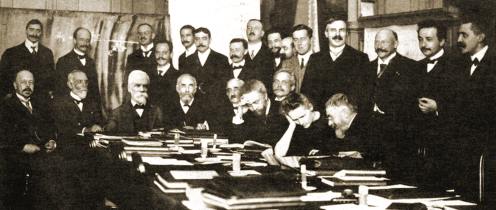
Left-to right:
Standing:
Robert Goldschmidt,
Max Planck,
Heinrich Rubens,
Arnold Sommerfeld,
Frederick Lindemann,
Maurice de Broglie,
Martin Knudsen,
Fritz Hasenöhrl,
Georges Hostelet,
Edouard Herzen,
James Hopwood Jeans,
Ernest Rutherford,
Heike Kamerlingh Onnes,
Albert Einstein,
Paul Langevin.
Seated:
Walther Nernst,
Marcel Brillouin,
Ernest Solvay,
Hendrik Lorentz,
Emil Warburg,
Jean-Baptiste Perrin (reading),
Wilhelm Wien (upright),
Marie Curie,
Henri Poincaré.
Ernest Solvay himself
was not present when the above group photo was taken.
This is why his head appears noticeably larger than it ought to...
His portrait was crudely pasted on before the picture was released.
There may have been a stand-in for Solvay when the photo was shot and whoever did this
clumsy doctoring made absolutely sure that Solvay's head was larger than the
face it had to hide!
Albert Einstein was the youngest in attendance.
Although Louis de Broglie
was not among the invitees in 1911, he did accompany his older brother Maurice
who was acting as scientific secretary (maybe Louis was the aforementioned stand-in for Solvay).
Legend has it that the 1911 Solvay conference
helped Louis de Broglie decide to start a career in theoretical physics.
He would become one of the rising stars at the Solvay conference of 1927...
The Fifth Solvay Conference (1927)
"Electrons and Photons"
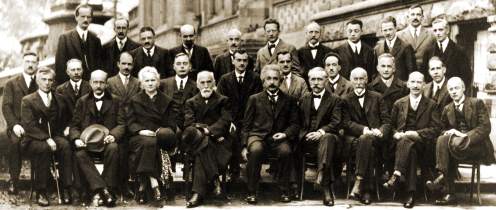
Photograph taken on 1927-10-25, by the Belgian photographer
Benjamin Couprie.
Left-to right:
Top row:
A. Piccard,
E. Henriot,
P. Ehrenfest,
Ed. Herzen,
Th. De Donder,
E. Schrödinger,
E. Verschaffelt,
W. Pauli,
W. Heisenberg,
R.H. Fowler,
Léon Brillouin.
Middle:
P. Debye,
M. Knudsen,
W.L. Bragg,
H.A. Kramers,
P.A.M. Dirac,
A.H. Compton,
Louis de Broglie,
Max Born,
Niel Bohr.
Front row:
I. Langmuir,
Max Planck,
Marie Curie,
H.A. Lorentz,
A. Einstein,
P. Langevin,
Ch. E. Guye,
C.T.R. Wilson,
O.W. Richardson.
21 attendees (out of 29) are seen... In order of appearance :
Erwin Schrödinger,
Niels Bohr,
Auguste Piccard,
Werner Heisenberg,
Paul Ehrenfest,
Peter Debye,
Wolfgang Pauli,
Léon Brillouin,
Hendrik Kramers,
Paul Dirac,
Max Born,
Louis de Broglie,
Irving Langmuir,
Marie Curie,
William Lawrence Bragg,
Arthur Holly Compton,
Owen Richardson,
H.A. Lorentz,
Paul Langevin,
Albert Einstein and Max Planck.
The 45 Participants
in
chronological order of birth
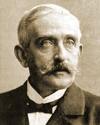 Emil Gabriel Warburg (1846-1931) Emil Gabriel Warburg (1846-1931)
Emil Warburg was president of the
Deutsche
Physikalische Gesellschaft (DPG) from 1899 to 1905.
He had distinguished himself (with
Kundt, in Strassburg)
in the kinetic theory of gases, which was a
key topic of the first Solvay conference.
Ph.D. 1867
|
Wikipedia
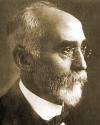 Hendrik A. Lorentz (1853-1928)
Chairman Hendrik A. Lorentz (1853-1928)
Chairman
Among the many contributions of H.A. Lorentz is
the coordinate transformation
which is the cornerstone of Special Relativity.
In 1892, Lorentz proposed a
theory of the
electron (discovered by Perrin in 1895 and
J.J. Thomson in 1898).
Ph.D. 1875
|
Nobel 1902
|
MacTutor
|
Wikipedia
|
Weisstein
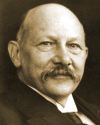 Heike Kamerlingh Onnes (1853-1926) Heike Kamerlingh Onnes (1853-1926)
In 1908, the
cryogenic work of Kamerlingh Onnes
culminated in the liquefaction of helium.
He reached a temperature of 0.9 K.
In 1911, he discovered the superconductivity, at very low temperatures,
of pure metals such as mercury, tin and lead.
Ph.D. 1879
|
Nobel 1913
|
Scientists of the Dutch School
|
Virial Coefficients
|
Wikipedia
|
Weisstein

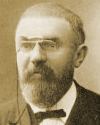 J. Henri Poincaré (1854-1912;
X1873) J. Henri Poincaré (1854-1912;
X1873)
Poincaré was the last universal genius and quintessential
absent-minded professor (cf. Savant Cosinus
comic strip).
Poincaré conceived Special Relativity
before Einstein did.
 His mathematical legacy includes
chaos theory and topology.
His mathematical legacy includes
chaos theory and topology.
Ph.D. 1879
|
MacTutor
|
Wikipedia
|
Weisstein
|
Bruce
Medal 1911
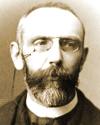 Louis "Marcel" Brillouin (1854-1948) Louis "Marcel" Brillouin (1854-1948)
Marcel Brillouin attended the 1911 conference and his
son Léon Brillouin (1889-1969) attended the 1927
conference.
Both of them were educated at the
Ecole Normale Supérieure and held professorships
at the Sorbonne and Collège de France.
He was the teacher of Pierre Weiss.
Ph.D. 1880 & 1882
|
Wikipedia
|
MacTutor

 Max Planck (1858-1947) Max Planck (1858-1947)
Planck combined the formulas of
Wien (UV) and
Rayleigh (IR) to obtain
a single expression for the whole
blackbody spectrum.
On Dec. 14, 1900, he justified it by proposing that exchanges of
energy only occur in discrete lumps,
which he dubbed quanta.

Ph.D. 1879
|
Nobel 1918
|
Wikipedia
|
MacTutor
|
FB
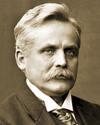 Wilhelm Wien (1864-1928) Wilhelm Wien (1864-1928)
In 1893, Willy Wien formulated the
Wien displacement law which describes how the shape of
the blackbody spectrum is scaled with temperature.
This helped Planck devise the precise
expression which led to the theory of quanta.
Ph.D. 1886
|
Nobel 1911
|
Wikipedia
|
Wien's distribution law (UV)
|
Wien's displacement law
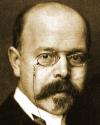 Walther Nernst (1864-1941) Walther Nernst (1864-1941)
In 1906, Nernst stated the
third law of thermodynamics : In an isothermal reversible transformation
between two stable states of a system, the change in entropy vanishes as
the temperature tends to zero.
In 1911, Planck proposed to put
S=0 at T=0.
Ph.D. 1887
|
Nernst equation
|
Nobel 1920
|
Wikipedia
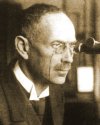 Heinrich Rubens (1865-1922) Heinrich Rubens (1865-1922)
In 1889,
Heinrich Rubens wrote his doctoral dissertation on the
spectrum of the light reflected by metals.
His experimental results suggested to
Max Planck the form of the law of blackbody radiation
which led him to propose the idea of quanta.
Ph.D. 1889
|
Wikipedia
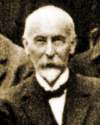 Charles-Eugène Guye (1866-1942) Charles-Eugène Guye (1866-1942)
The Swiss mathematician Charles-Eugène Guye succeeded
Charles Soret
as Professor of Physics at the University of Geneva
(Guye had been Soret's first Ph.D. student).
For Guye, any phenomenon could only exist at certain
observation scales.
Genève et ses savants
|
Rues de Genève
 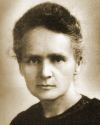 Marie Curie, physical chemist (1867-1934) Marie Curie, physical chemist (1867-1934)
Marie Sklodowska-Curie was the first woman to earn a Nobel
prize and the first person to earn two.
In 1898, she isolated two new elements (polonium and radium)
by tracking their ionizing radiation, using the electrometer of
Jacques and Pierre Curie.
Ph.D. 1903
|
Nobel 1903
(Physics)
|
Nobel 1911
(Chemistry)
|
Wikipedia
|
AIP
|
Facebook Fans
In 1916, he
extended Bohr's model to
elliptical orbits, introducing the
azimuthal quantum number (L)
and the fine-structure constant
a = 1 / 137.036.
In 1920, he added the magnetic quantum number (m) paving the way for the
discovery of spin.
Ph.D. 1891
|
MacTutor
|
Wikipedia
|
Weisstein
 Charles Thomson Rees Wilson (1869-1959) Charles Thomson Rees Wilson (1869-1959)
In 1895, the meteorologist C.T.R. Wilson reproduced
cloud formation in a box. Ultimately, in 1911, supersaturated dust-free
ion-free air was seen to condense along the tracks of ionizing particles.
The Wilson cloud chamber detector was born.
Academic Genealogy
|
Nobel 1927
|
Wikipedia
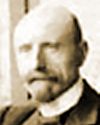 Jules Emile Verschaffelt (1870-1955) Jules Emile Verschaffelt (1870-1955)
The Flemish physicist Emile Verschaffelt
had received a French education and his wife was Dutch.
He got his doctorate under Kamerlingh Onnes
in 1899. For years, he was Science secretary for the
Institut International de Physique Solvay.
Ph.D. 1899
|
Scientists of the Dutch School
|
Wikipedia
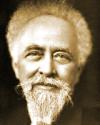 Jean-Baptiste Perrin (1870-1942) Jean-Baptiste Perrin (1870-1942)
In 1895, Jean Perrin
showed that cathode rays consist of negatively charged particles.
In 1908, he accurately determined
Avogadro's number
and confirmed
the atomic nature of matter,
based on Einstein's explanation of Brownian motion (1905).
Nobel 1926
|
French
Physicists
|
Wikipedia
|
NNDB
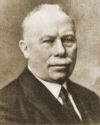 Martin Hans Christian Knudsen (1871-1949) Martin Hans Christian Knudsen (1871-1949)
The Danish physicist Martin Knudsen was very active in hydrography.
He revived Maxwell's
kinetic theory of gases, especially at low pressure:
Knudsen flow, Knudsen number,
etc. The Knudsen cell is used in
molecular beam epitaxy.
Wikipedia
  Ernest Rutherford (1871-1937) Ernest Rutherford (1871-1937)
The gold-foil
experiment (1909) suggested to Rutherford an atom consisting of a
heavy nucleus orbited by electrons.
Such a system ought to collapse, as accelerated charges radiate energy away.
Bohr's
quantized model would explain why it doesn't.
Academic Genealogy
|
Nobel 1908
|
Encyclopedia of New Zealand
|
Wikipedia
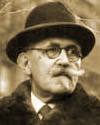 Paul Langevin (1872-1946) Paul Langevin (1872-1946)
Langevin made his mark
in many fields of physics, including magnetism.
He had a love affair with Marie Curie (1910)...
Two of their respective grandchildren
(Michel Langevin & Irène Langevin-Joliot)
are physicists married to each other,
whose son is the astrophysicist Yves Langevin (1951-).
Ph.D. 1902
|
Biography
|
Ultrasonic transducer (1917)
|
Wikipedia
|
Weisstein
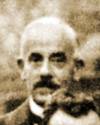 Théophile de Donder (1872-1957) Théophile de Donder (1872-1957)
In 1922, he defined chemical affinity
in terms of the change in the
free enthalpy (DG).
He founded the thermodynamics of irreversible processes,
which led his student
Ilya Prigogine (1917-2006)
to a Nobel prize. He was a friend of Einstein.
Ph.D. 1901
|
1899 doctorate
|
Wikipedia
|
Weisstein
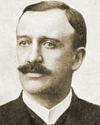 Friedrich "Fritz" Hasenöhrl (1874-1915) Friedrich "Fritz" Hasenöhrl (1874-1915)
Fritz Hasenöhrl had been a student of
Boltzmann and
Stefan
at the University of Vienna,
where he suceeded Boltzmann as head of theoretical physics in 1907.
He had a profound influence on his student Erwin Schrödinger.
He was
killed in action in 1915.
Ph.D. 1896
|
University of Vienna
|
Wikipedia

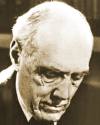 Maurice de Broglie (1875-1960) Maurice de Broglie (1875-1960)
He resigned his French navy commission in 1904 and worked under
Paul Langevin.
He opened a private X-ray laboratory
in 1908 and mentored successful physicists
like Louis de Broglie and
Louis Leprince-Ringuet
(1901-2000; X1920n).
Académie Française
|
Wikipedia
|
EXAFS
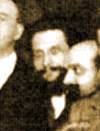 Georges Hostelet (1875-1960) Georges Hostelet (1875-1960)
Hostelet obtained a scientific doctorate in 1905 and
became a collaborator of Ernest Solvay.
In 1915 he fought against the Germans occupying
Brussels and was deported. After the war, he became a renowned
statistician and social scientist.
French Wikipedia
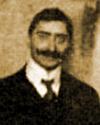 Robert B. Goldschmidt, chemist (1877-1935) Robert B. Goldschmidt, chemist (1877-1935)
Robert Goldschmidt was a Belgian enthusiast for technological innovations.
He proposed standardized microfiche (microfilm) in 1906.
He launched the dirigible Belgique in 1907
and started the first regular radio broadcasts of concerts in 1914.
Brussels Cemetery
|
Wikipedia
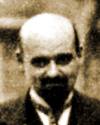 Edouard Herzen,
Belgian chemist (1877-1936) Edouard Herzen,
Belgian chemist (1877-1936)
Edouard Herzen is one of only 7 people who participated in
the two Solvay conferences of 1911 and 1927.
The others are:
H.A. Lorentz, Max Planck,
Marie Curie, Martin Knudsen,
Paul Langevin
and Albert Einstein (the youngest participant in 1911).
New York Times (1923)
 Sir James Jeans (1877-1946) Sir James Jeans (1877-1946)
James Hopwood Jeans was the first to propose
steady-state cosmology (which had to be abandoned in 1965, when the
Cosmic Microwave Background was discovered).
He became famous for popularizing Science after his retirement, in 1929.
Mnemonics for Pi
|
Rayleigh-Jeans distribution law (IR)
|
MacTutor
|
Wikipedia
 Albert Einstein, physicist (1879-1955) Albert Einstein, physicist (1879-1955)
In 1905, Einstein published on
Brownian motion (existence of atoms) the photoelectric effect (discovery of the photon)
and his own
Special Theory of Relativity,
which he unified with gravity in 1915 by
formulating the General Theory of Relativity.
In 1916, he
discovered what led to lasers.

PhD 1905
|
Nobel 1921 |
MacTutor
|
Bonn
|
Weisstein
|
AIP
|
WP
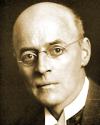 Sir Owen Willans Richardson (1879-1959) Sir Owen Willans Richardson (1879-1959)
In 1901, he formulated what would become (in 1923) the Richardson-Dushman law
of thermionics
("vacuum tubes") whereby the current density is
J = A T2 exp(-W/kT)
where
A = 4pmqk2/h3 = 1201735 A/m2/K2
(Richardson's constant).
Ph.D. 1904
|
Nobel 1928
|
Wikipedia
|
The Electron Theory of Matter
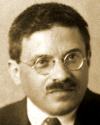 Paul Ehrenfest, physicist (1880-1933) Paul Ehrenfest, physicist (1880-1933)
In 1909,
he remarked that Special Relativity makes
the rim of a spinning disk shrink but not its diameter,
a contradiction with Euclidean geometry which led Einstein to
General Relativity.
He was a great teacher and a pioneer of quantum theory (coining the term
ultraviolet catastrophe in 1911).
Ph.D. 1904
|
Leiden University (1912-1933)
|
Numericana
|
MacTutor
|
Wikipedia
|
Weisstein
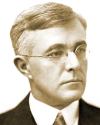 Irving Langmuir, chemist (1881-1957) Irving Langmuir, chemist (1881-1957)
In 1906, Irving Langmuir obtained his doctorate under
Walther Nernst (who had devised
an incandescent lamp a few years earlier).
He joined the General Electric Research Lab in 1909 and came up
with the gas-filled, coiled tungsten lamp.
Ph.D. 1906
|
Nobel 1932
|
Surface Chemistry: 1939 film (29:52)
|
Wikipedia
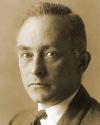 Max Born, mathematical physicist (1882-1970) Max Born, mathematical physicist (1882-1970)
Born's probabilistic interpretation of Schrödinger's wave function
ended determinism in physics but provided a firm ground for quantum theory.
Irene Born, the eldest of his 3 children, is the mother of
Olivia Newton-John.

Ph.D. 1906
|
Nobel 1954
|
Biography (2005)
|
MacTutor
|
Wikipedia
|
Weisstein

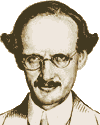 Auguste Piccard, physicist (1884-1962) Auguste Piccard, physicist (1884-1962)
Swiss-born Belgian physicist who hypothesized the existence of Uranium-235 (in 1917)
and pioneered the exploration of the upper stratosphere (16200 m, 1931)
and the deep seas (bathyscaphe, 1948).
He inspired Hergé for the character
of Tryphon Tournesol,
who debuted in 1944.

encyclopedia.com
|
Auguste & Jean Piccard
|
video (French)
|
Wikipedia
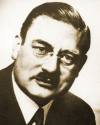 Peter Debye,
chemist (1884-1966) Peter Debye,
chemist (1884-1966)
In 1912, Debye pioneered the use of dipole
moments for asymmetrical molecules and extended Einstein's
theory of specific heat
to low temperatures by including
low-energy phonons.
He analyzed thermal attenuation in X-ray scattering (1914/1915).
Ph.D. 1908
|
Nobel 1936
|
Wikipedia
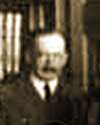 Emile Henriot
(1885-1961) Emile Henriot
(1885-1961)
Emile Henriot was born in Besançon, obtained his doctorate under
Marie Curie (in 1912) and taught at
ULB.
He detected the natural radioactivity of potassium and rubidium.
He made ultracentrifuges
possible and pioneered the
electron microscope.
Wikipedia

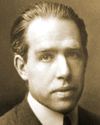 Niels Bohr, physicist (1885-1962) Niels Bohr, physicist (1885-1962)
In 1913, Bohr started the quantum revolution
with a model where
the orbital angular momentum
of an electron only has discrete values.
He spearheaded the Copenhagen Interpretation which
holds that quantum phenomena are inherently probabilistic.

Ph.D. 1911
|
Nobel 1922
|
Wikipedia
|
Coat of Arms
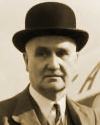 Frederick Alexander Lindemann (1886-1957) Frederick Alexander Lindemann (1886-1957)
Frederick Lindemann confirmed
Einstein's basic predictions
concerning heat capacities at low temperatures.
He would later become a scientific advisor to Winston Curchill.
He was made Lord Cherwell in 1941
and Viscount Cherwell in 1956.
Ph.D. 1911
|
Wikipedia
|
NNDB
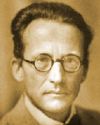 Erwin Schrödinger, physicist (1887-1961) Erwin Schrödinger, physicist (1887-1961)
In 1926, Schrödinger matched observed quantum behavior with the properties of
a continuous nonrelativistic wave obeying the
Schrödinger Equation.
In 1935, he challenged the Copenhagen Interpretation,
with the famous tale of Schrödinger's cat.

PhD 1910
|
Nobel 1933
(lecture)
|
Dublin
|
WP
|
McT
|
FB
 Sir Ralph Howard Fowler (1889-1944) Sir Ralph Howard Fowler (1889-1944)
From 1922 to 1939, Ralph H. Fowler (FRS 1925, knighted in 1942)
supervised 15 FRS and 3 Nobel laureates.
In 1923, he introduced
Dirac to quantum theory.
He held the Chair of Theoretical Physics at the
Cavendish Laboratory (1932).
M.A. 1915
|
MacTutor
|
Wikipedia
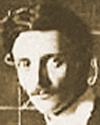 Léon Nicolas Brillouin (1889-1969) Léon Nicolas Brillouin (1889-1969)
In 1926, Léon Brillouin discovered the solid-state
Brillouin zones.
He was a great-grandson of
Charles Briot (1817-1882)
a grandson of
Éleuthère
Mascart (1837-1908) and the son of
Marcel Brillouin (1854-1948) who had been invited in 1911.
Ph.D. 1920
|
Biography
|
Wikipedia

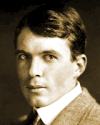 W. Lawrence Bragg (1890-1971) W. Lawrence Bragg (1890-1971)
In 1915, Lawrence Bragg was awarded the Nobel prize for physics
jointly with his father William
Bragg for their pioneering work on
X-ray crystallography, just after
Max von Laue (Nobel 1914).
W.L. Bragg rose to Major in WWI (1915-19)
before teaching at Manchester (1919-37).

Bragg's law (1912)
|
Ph.D. 1914
|
Nobel 1915
|
XRC
|
Britannica
|
Wikipedia
|
NNDB

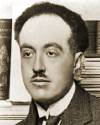 Louis de Broglie, physicist (1892-1987) Louis de Broglie, physicist (1892-1987)
In 1923, de Broglie proposed that any particle has
wavelike properties, with a
wavelength inversely proportional to its momentum
(this helps justify Schrödinger's equation).
He predicted interferences for an electron beam hitting a crystal.

Ph.D. 1924
|
Nobel 1929
|
Wikipedia
|
MacTutor
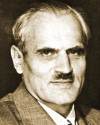 Arthur Holly Compton (1892-1962) Arthur Holly Compton (1892-1962)
Compton was professor of physics at Washington University (St. Louis, MO).
In 1922, he figured out that X-rays collide with electrons as if they
were relativistic particles, so their frequency shifts according to
the angle of deflection
(Compton scattering).
Cover
of Time (1936-01-13).

Nobel 1927
|
St. Louis
Walk of Fame
|
Wikipedia
|
AIP
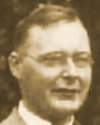 Hendrik A. "Hans" Kramers (1894-1952) Hendrik A. "Hans" Kramers (1894-1952)
In 1916, as a young Dutchman on a trip to Copenhagen,
Hans Kramers was the first foreign scholar to seek out Niels Bohr.
He became his assistant and helped develop what became
known as Bohr's Institute,
where he worked on dispersion theory.
Ph.D. 1919
|
Dirk ter Haar
|
Wikipedia
|
NNDB
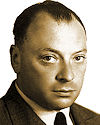 Wolfgang [Ernst] Pauli,
physicist (1900-1958) Wolfgang [Ernst] Pauli,
physicist (1900-1958)
In 1925, Wolfgang Pauli formulated the exclusion principle
which explains the entire table of elements.
His Godfather was Ernst Mach.
Pauli's sharp tongue was legendary; he once said about a bad paper:
"This isn't right; this isn't even wrong."

Ph.D. 1921
|
Nobel 1945
|
great-grandfather
|
Wikipedia
|
Video Tribute
|
NNDB
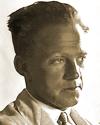 Werner Heisenberg, physicist (1901-1976) Werner Heisenberg, physicist (1901-1976)
In 1925, Werner Heisenberg replaced Bohr's semi-classical orbits
by a new quantum logic which became known as
matrix mechanics (with
the help of Born and
Jordan).
A consequence of the noncommutativity so entailed is
Heisenberg's uncertainty principle.

Ph.D. 1923
|
Nobel 1932
|
Patriot
|
MacTutor
|
Wikipedia
|
NNDB

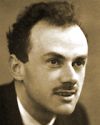 Paul Adrien Maurice Dirac (1902-1984) Paul Adrien Maurice Dirac (1902-1984)
In 1925, Paul Dirac came up with the formalism
on which quantum mechanics is now based.
In 1928, he discovered a relativistic wave function for the electron
which predicted the existence of antimatter, before it was
actually observed.

Ph.D. 1926
|
Nobel 1933
|
Wikipedia
|
MacTutor
Sharing Science on the Web
|
Giants of Science
|
Solvay Conferences
|
Armorial
Taupe Laplace
|
Nicolas Bourbaki
|
Lucien Refleu
|
Roger Apéry
|
Other Biographies
|